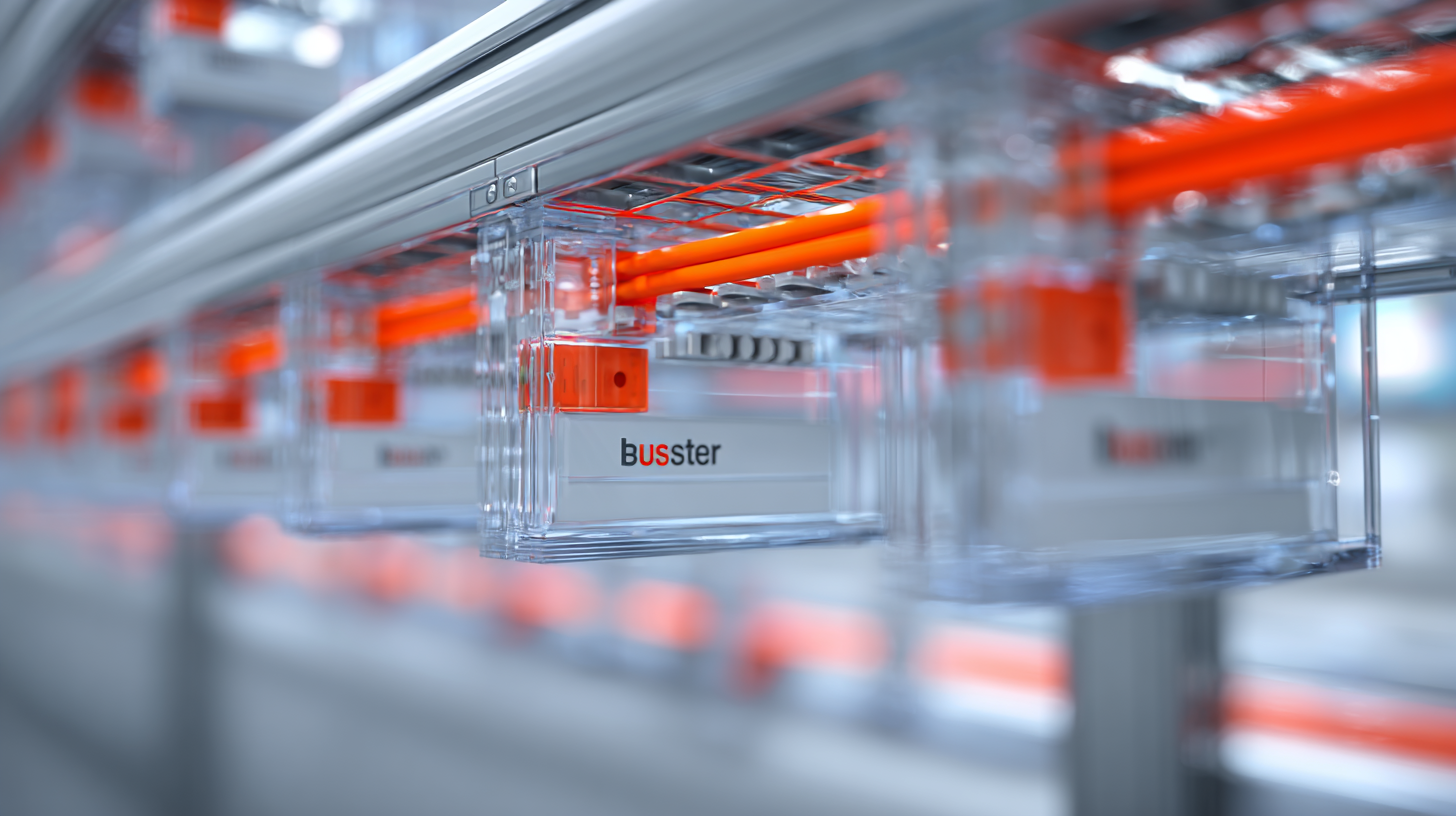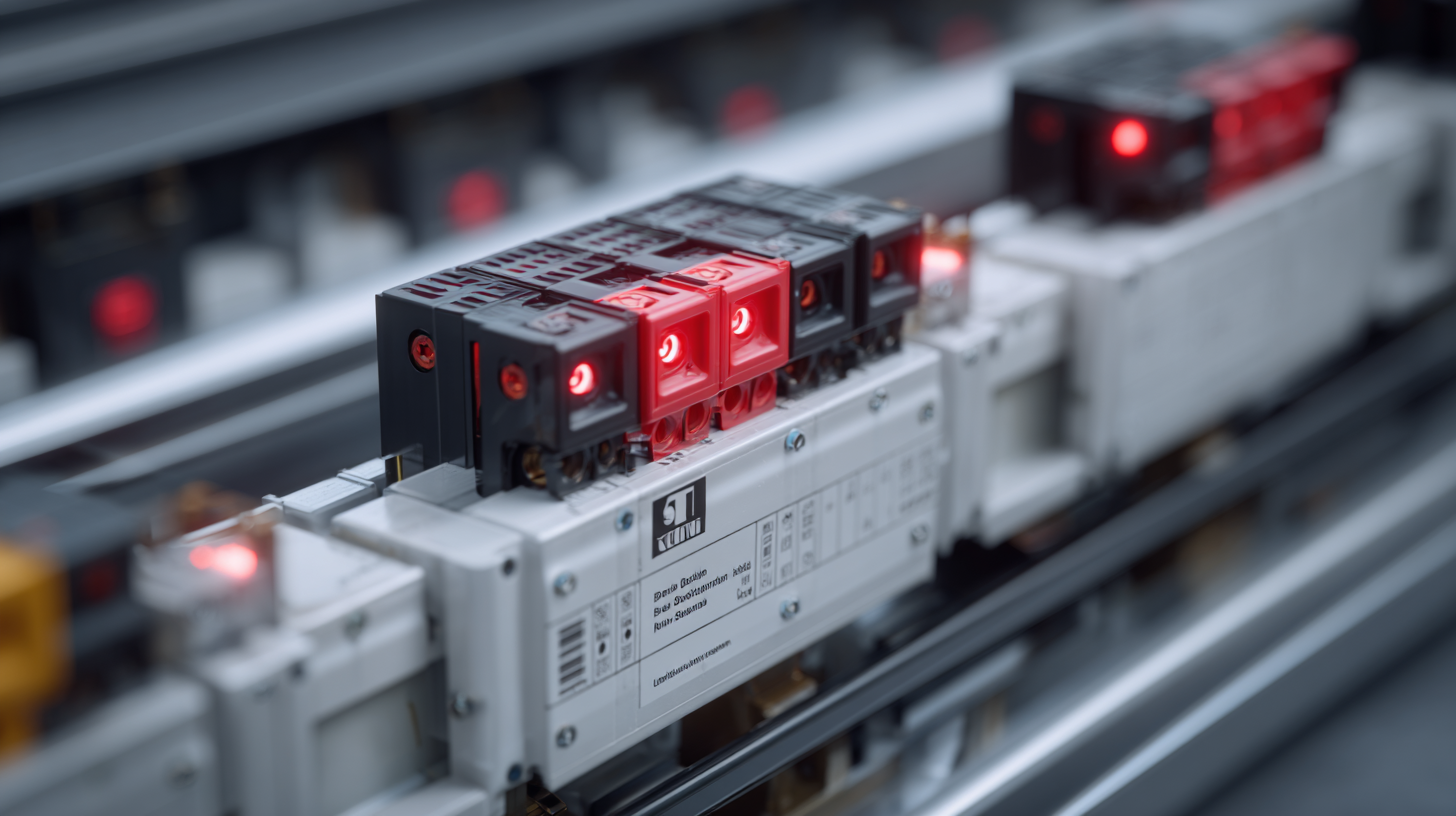Leave Your Message
-
Phone
-
E-mail
-
Whatsapp
-
Whatsapp


When it comes to optimizing electrical distribution systems, the choice of Busbar Systems is critical, yet fraught with challenges. According to a recent industry report from MarketsandMarkets, the global busbar market is expected to grow from USD 4.5 billion in 2022 to USD 7.2 billion by 2027, indicating a significant expansion in demand. However, selecting the right busbar system involves navigating complexities such as load capacity, thermal management, and installation constraints. Additionally, a study from ResearchAndMarkets highlights that nearly 60% of companies face issues related to inefficient energy use and equipment failures due to inadequate busbar selection. As organizations strive to improve efficiency and reduce downtime, understanding these challenges is essential for making informed decisions that align with operational needs. Hence, it becomes imperative to evaluate various factors that influence the selection of the best busbar systems to ensure reliability and performance in electrical operations.

When selecting busbar systems for power operations, understanding the importance of quality cannot be overstated. Copper busbars, known for their superior conductivity and corrosion resistance, play a critical role as a "bridge" in power systems. Their excellent conductivity allows for minimal energy losses, thereby enhancing overall system efficiency. According to a report, the thermal analysis of busbars reveals that high-quality copper busbars can handle significant currents while maintaining safe operating temperatures, which is crucial in preventing failures and ensuring longevity in power distribution systems.
Moreover, proper busbar selection is not solely about materials; it involves comprehensive analytical calculations to assess electrodynamic forces in different configurations. Studies indicate that poor selection can lead to transient voltage issues, jeopardizing the entire power system. For instance, simulations using finite element method (FEM) techniques showcase how asymmetric busbar systems can experience imbalanced electrical stresses, leading to potential hazards if not properly managed. Therefore, investing in high-quality busbar systems backed by rigorous analysis not only enhances performance but also mitigates risks in power grid operations.
When selecting a busbar manufacturer, several key factors come into play that can significantly impact the efficiency and reliability of your operations. First and foremost, it's crucial to assess the manufacturer’s experience and reputation in the industry. Look for companies that have a proven track record of delivering high-quality busbar systems tailored to varying operational needs. Customer reviews and case studies can provide valuable insights into a manufacturer’s reliability and the longevity of their products.
Additionally, consider the customization options offered by the manufacturer. Every operation has unique requirements, and a one-size-fits-all solution often falls short. Ensure that the manufacturer can provide tailored solutions to meet your specific electrical needs.
**Tip:** Don’t hesitate to ask for samples or prototypes before making a large order. This can help you evaluate the quality and suitability of the materials.
Lastly, investigate the manufacturer’s compliance with industry standards and regulations. A reputable company will adhere to safety standards and maintain certifications that ensure their products meet necessary criteria.
**Tip:** Ask for documentation confirming the manufacturer’s compliance with relevant standards; this ensures that your investment is secure and meets operational safety demands.

When it comes to selecting the best busbar systems for your operations, evaluating manufacturer reputation and experience plays a crucial role. A manufacturer’s reputation is often built on their history in the industry, the quality of their products, and the level of customer service they provide. Potential buyers should prioritize manufacturers known for reliability and quality assurance. Online reviews, case studies, and testimonials from existing customers can offer insights into a manufacturer's standing and reliability. Engaging with industry professionals and trade organizations can further help in gathering credible information about a manufacturer’s reputation.
Experience is another key factor in the selection process. Manufacturers that have been in the industry for a longer time are likely to have refined their processes and developed better solutions to meet the dynamic needs of their clients. They are also usually more adaptable to changes and can provide customized solutions based on their extensive knowledge. Building relationships with experienced manufacturers can also lead to better service, as they often offer comprehensive support, from initial design to installation and maintenance. In an industry where precision and safety are paramount, partnering with a reputable and experienced manufacturer can ensure optimal performance and longevity of your busbar systems.

When selecting busbar systems for your operations, understanding the top features that denote reliability is crucial. One of the foremost characteristics to consider is the material quality. Copper and aluminum are the most common choices, but copper often outperforms aluminum in conductivity, making it a preferred option for high-performance applications. Additionally, the thickness of the busbars impacts their load-carrying capacity. Investing in systems with adequate thickness ensures durability and longevity, reducing the risk of overheating and system failures.
Another vital feature to look for is modularity. A modular busbar system allows for easy expansion and customization, adapting seamlessly to changes in your operational needs. This flexibility can be particularly beneficial in industries facing rapid growth or technological advancements. Furthermore, pay attention to the insulation type used in the busbar system; high-quality insulation materials provide enhanced safety and reduce the risk of electrical accidents. Lastly, robust support and installation services from the manufacturer can make a significant difference in system performance, ensuring that your busbar system operates at its best from day one.
When selecting busbar systems for commercial operations, a crucial factor to consider is the balance between cost and quality. According to a recent report from the International Electrotechnical Commission (IEC), approximately 30% of a facility's electrical system installation costs can be attributed to busbar systems. This sharp cost component necessitates careful analysis, as opting for cheaper alternatives may lead to increased maintenance costs and potential failures.
A study by Frost & Sullivan indicates that high-quality busbar systems can enhance operational efficiency by up to 15%, potentially offsetting initial investment costs. The findings stress that while lower upfront costs are enticing, the long-term financial implications of poor quality—such as unplanned downtime and repair expenses—can outweigh initial savings. Therefore, when making trade-offs, it's essential to analyze not only the initial costs but also the durability, reliability, and overall lifecycle cost of the busbar systems to ensure a sound investment in the future.
| Criteria | Low-Cost Busbars | Mid-Range Busbars | High-Quality Busbars |
|---|---|---|---|
| Material Used | Aluminum | Copper & Aluminum | Premium Copper |
| Thermal Conductivity | Good | Very Good | Excellent |
| Cost (per meter) | $5.00 | $10.00 | $20.00 |
| Lifespan | 5 years | 10 years | 20 years |
| Maintenance Requirements | High | Moderate | Low |
| Efficiency | 75% | 85% | 95% |
